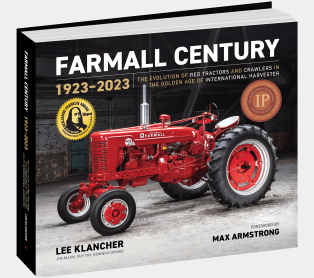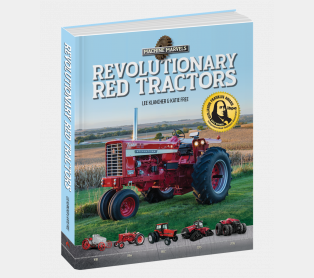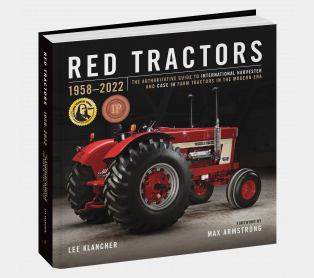Farmall's Deep History in Hinsdale, Illinois

In 1917, Harvester purchased a 414-acre farm just 20 miles from downtown Chicago. The original Farmall was tested on the farm’s gently rolling hills, along with hundreds of other pieces of agricultural equipment. Annual demonstration outings for IHC executives and staff were held there, complete with orchestra accompaniment, circus tents, and lavish catered meals. In the early years, the place was known as the Hinsdale Farm, and it later became known as Burr Ridge.
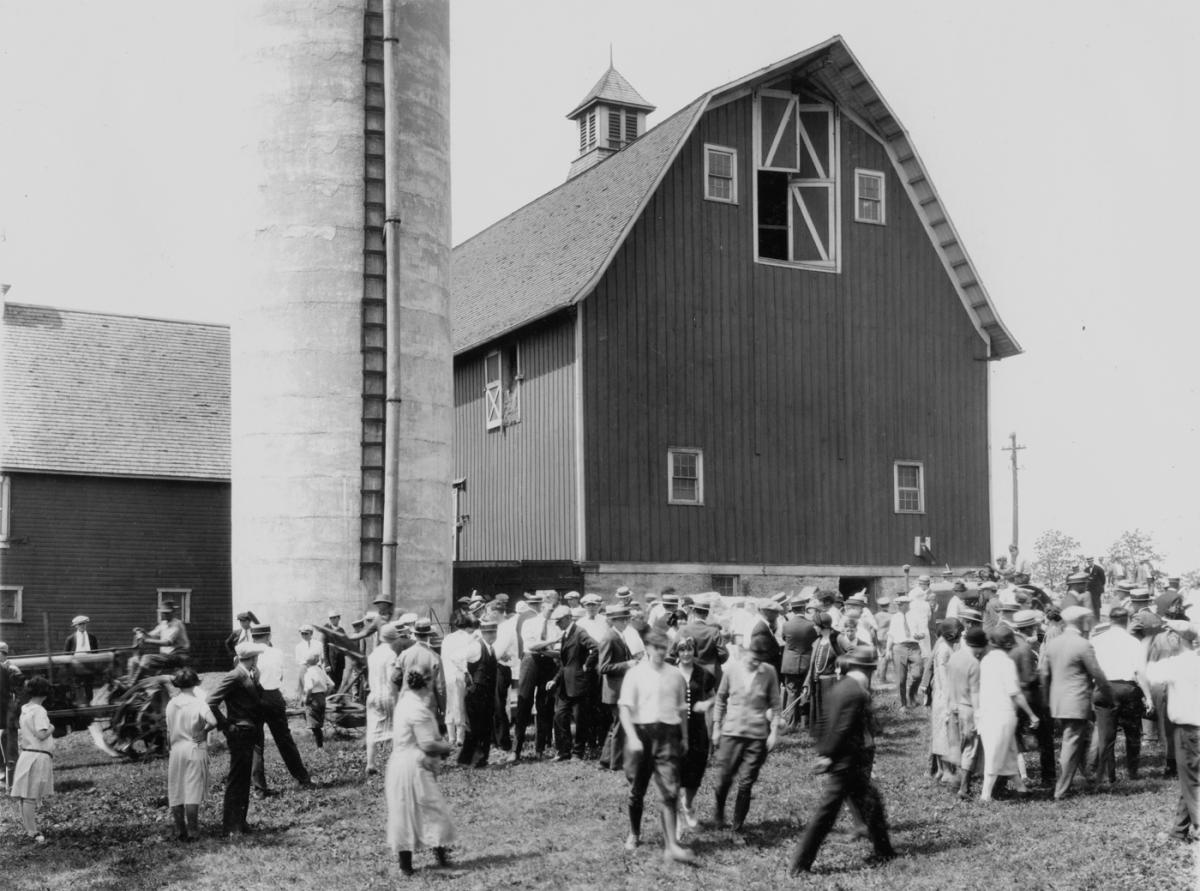
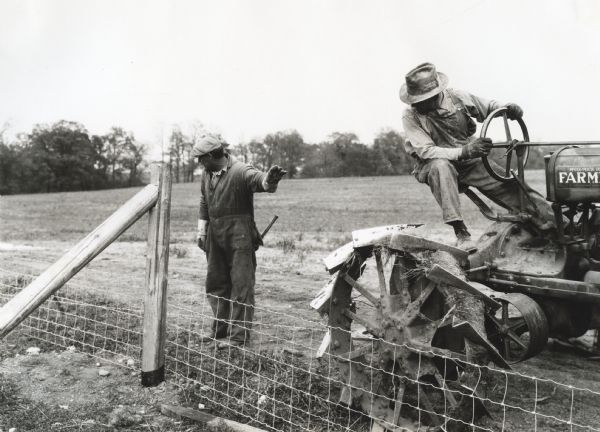
During heavy investment into research and engineering in the 1950s, Hinsdale was selected as the site for the $5 million Farm Equipment Research and Engineering Center (FEREC). The eight-acre site would consolidate Harvester’s engineering efforts and put 1,360 engineering and support staff together under one roof. FEREC was state-of-the-art, complete with an indoor “field” used for tractor and implement testing, a tractor-sized photographic studio, and temperature-controlled rooms capable of exposing machinery to 130 degrees of heat and 50 degrees below zero.
When the plans for the new center were made public in 1956, a nearby community decided to change the name of their village from the Hinsdale Countryside Estates to Harvester, Illinois.
All of this was part of a concerted effort to make up for lost time. In the early 1950s, Harvester had spread their development resources among many products. While cash was funneled to construction, trucks, and refrigeration divisions, tractor development focused on refinements and accessories rather than new platforms. The hundred series and the 30-50 series were both re-skins of existing platforms with upgraded features such as torque amplification to ease on the fly shifting and Fast Hitch. Too many of the upgrades were gimmicky additions, such as Electrall, a heavily promoted portable electric generator unit that sold so miserably they are rare and prized collectibles today.
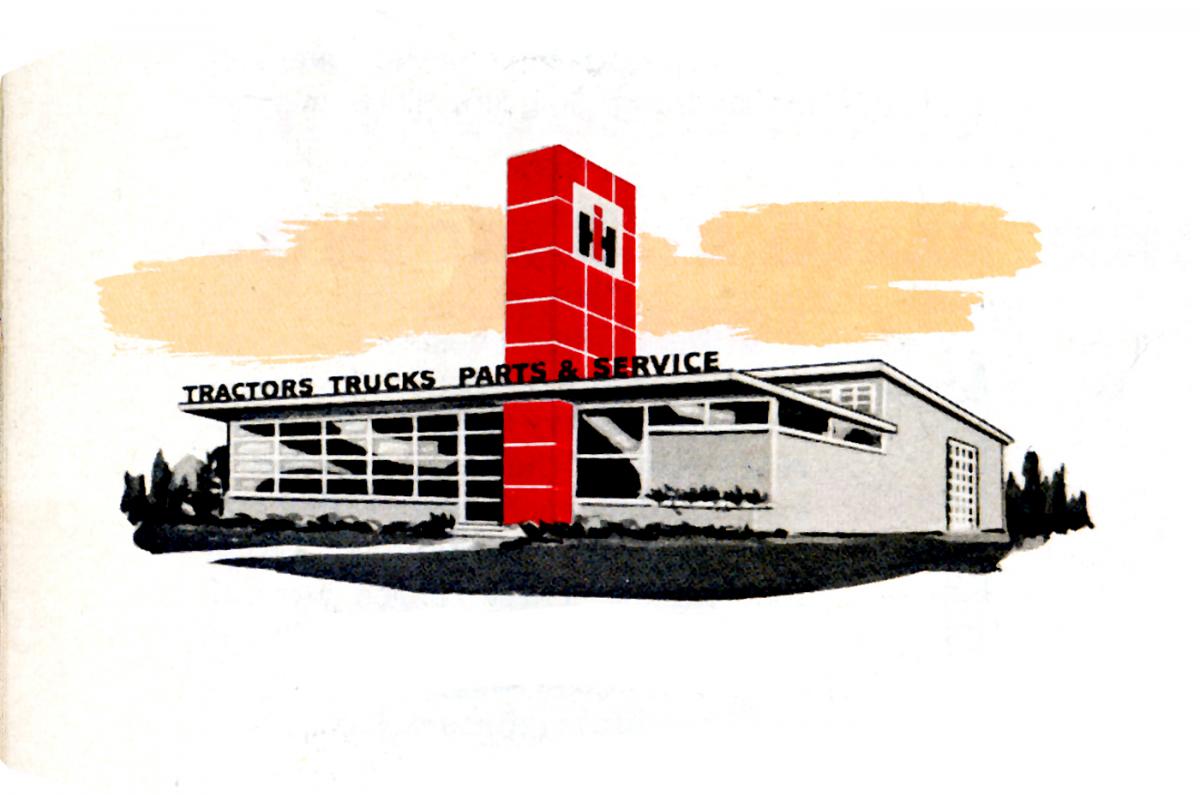
Also, management expressed interest in the urban market, feeling that the agricultural market was becoming saturated. They had successfully developed small tractors, and continued to enjoy success in that segment. As late as January 1958, Harvester World ran a feature describing the increasing losses of farmland to suburban sprawl. Unfortunately, however, Harvester underestimated the farmer’s interest in larger, more powerful tractors.
Not enough time and money had been invested in tractor development, particularly the large machines so popular with farmers working larger and larger areas.
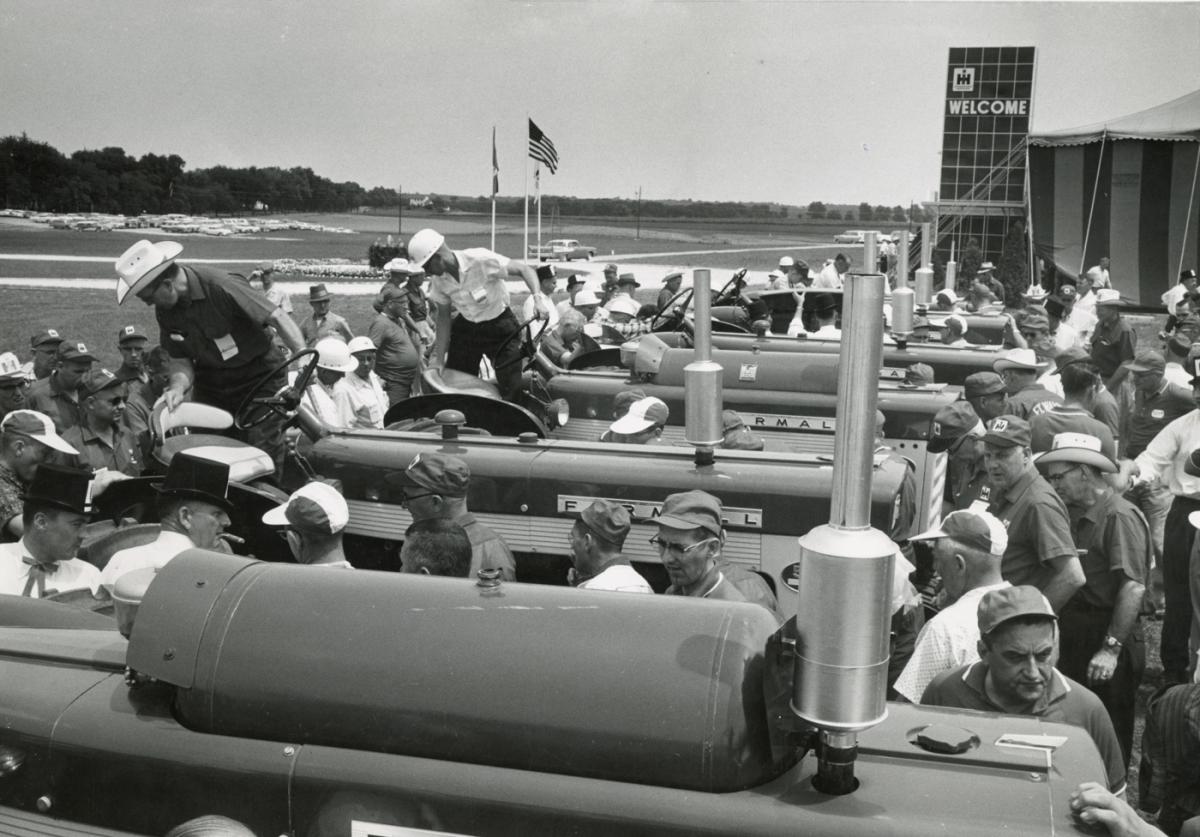
Harvester adjusted in the mid-1950s and turned their eyes toward the large tractor prize. More horsepower and more features were needed to satisfy the needs of the power farmer. The engine came from the crawler line, whose proven D282 diesel was used as the base for the new series’ gas engine. Features were one of the things Harvester had been developing steadily since 1939, and they offered a series of improvements in their hitch system, hydraulics, and power takeoff system. Time was not on their side—the program to develop the 40 and 60 series began in the mid-1950s—but the pieces were mostly in place.
As the new FEREC center was built and prototypes of the new 40 and 60 series tractors were tested, changes were taking place at the highest levels of IHC. In May 1958, McCaffrey retired and was replaced by another lifelong company man, Frank W. Jenks, who came from the credit and merchandising side. After nearly a decade of sliding deep into debt, electing a new leader with a fiscal background made perfect sense.
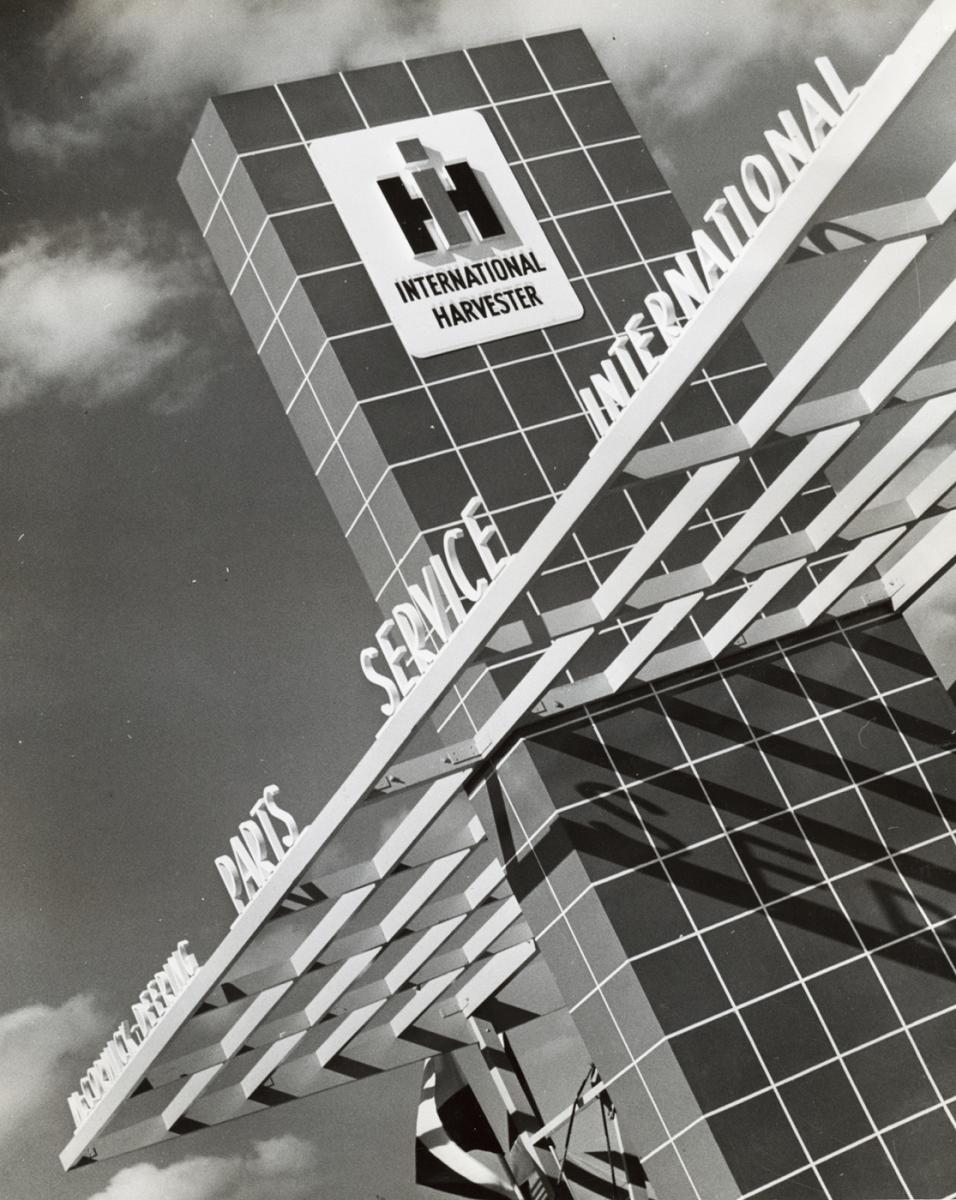
In 1945, this example of crisp IHC design was displayed at Hinsdale for dealers. Wisconsin Historical Society / 60325
Jenks stepped in as the recession of late 1957 and early 1958 was beginning to wane. Investments in research and engineering were paying off. A brand-new line of tractors was ready to roll out late in the year. The line had fresh styling and sheet metal, six-cylinder engines repurposed from the truck line, and a host of new features.
Months before Jenks replaced McCaffrey, plans were laid for a new model introduction to exceed any previously put on the by Harvester or anyone else, for that matter. Introductions were often done at regional shows, but this one would be held at Hinsdale (now Burr Ridge). More than 5,500 dealers were invited, and Harvester hired the Kilgore Rangerettes, a group of female dancers famed for precision performances and infamously short skirts, to open the ceremonies and perform dances such as the “power stroke,” during which the dance formation took the shape of a piston with red bandanas flashed to simulate the engine’s firing order. Seventy-seven new tractors were placed under a massive 90x210-foot circus tent. Nearly a dozen such tents covered the grounds, with demonstration plots set up nearby for working tractors and new implements.
On July 14, five days prior to the first dealer’s arrival at Hinsdale, a storm knocked the giant tent down, blanketing the new machines with torn canvas. All but two of the new line required repairs to be presentable.
Despite a strike that slowed production at the end of 1958, the new 40 and 60 series fueled the best sales year in the history of IHC in 1959. Total U.S. company sales were $1.7 billion, an increase of 24 percent from 1958. Farm equipment sales were $458 million, up 17 percent from 1958.
In July 1959, IHC’s new crown jewel opened when the Farm Equipment Research and Engineering Center at Hinsdale, Illinois marked the start of operations. The 1.3-million-square-foot complex housed nearly 1,500 engineers and support staff and was the largest agricultural engineering center in the world.
Former IH engineer Kenneth Ryan was fresh out of engineering school when he first saw the building. His visit came at the end of trips to several facilities for job interviews. “My second-to-last interview was with Deere in Moline. Deere tried to get me to stay an extra day and break my interview with International Harvester. I nearly did, but decided I better not.”
The visit to FEREC made a lasting impression on Ryan. “It was a brand-new, beautiful facility, and a college boy’s dream to walk into that place. The labs and the engineering facilities were just perfect.” He remembered the second floor of engineering as a vast, sparkling-clean room with few partitions and dozens of engineers working at drawing boards in crisp white shirts and neckties.
When he came home from his trip, he told his fiancée that his best interview was his last. “You know, that place would be so wonderful to work at,” he said. “But I bet their offer will come in lower.”
He was wrong. The IHC offer was the best he received. “It didn’t take three seconds to figure out where I was going to work,” he said.
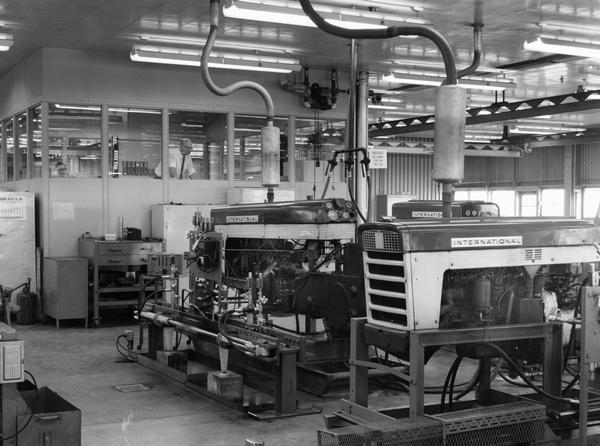
The Farm Equipment Research and Engineering Center opened in Hinsdale in July 1959 as the world’s largest dedicated agricultural engineering center. The $5 million facility included an indoor test track and extensive labs for testing equipment. These engines are being dyno-tested on February 16, 1961. Wisconsin Historical Society / 24148
Once at work, he was amazed at Harvester’s resources. “They made all their own bolts and bearings,” Ryan recalled. “All these materials, IH would manufacture. You could use standard IHC materials and parts for everything.
“Everything was done right. We were using strain gauges and brittle coding way before anyone else. We had an outstanding group of people. We were strong in design and engineering, and strong in engineering skills.”
At the opening ceremonies for FEREC, the first man to the podium after President Jenks was Mark Keeler, the long-time head of the Agricultural Engineering Division. Keeler’s words that day make it clear that IHC understood their position: “To the best of my knowledge and belief, our position in this business has always been the same—first place. But we know our competition is smart. We know they’re energetic. We know they have capital and facilities. And we know they’re shooting at us.”
To find out the rest of the incredible story of International Harvester, get your copy of Red Tractors 1958–2022 here!
Previous Excerpt - Next Excerpt


